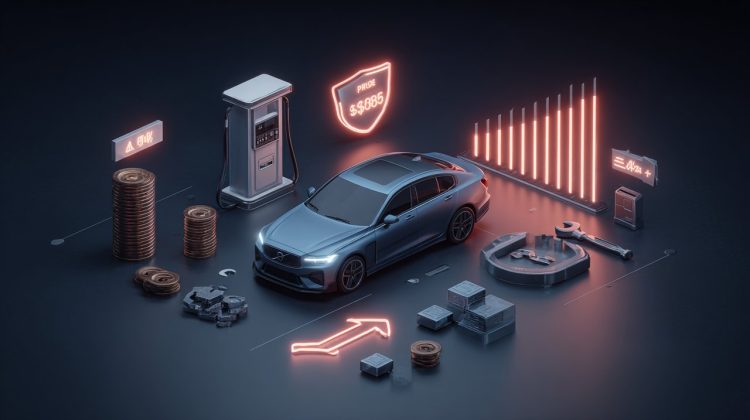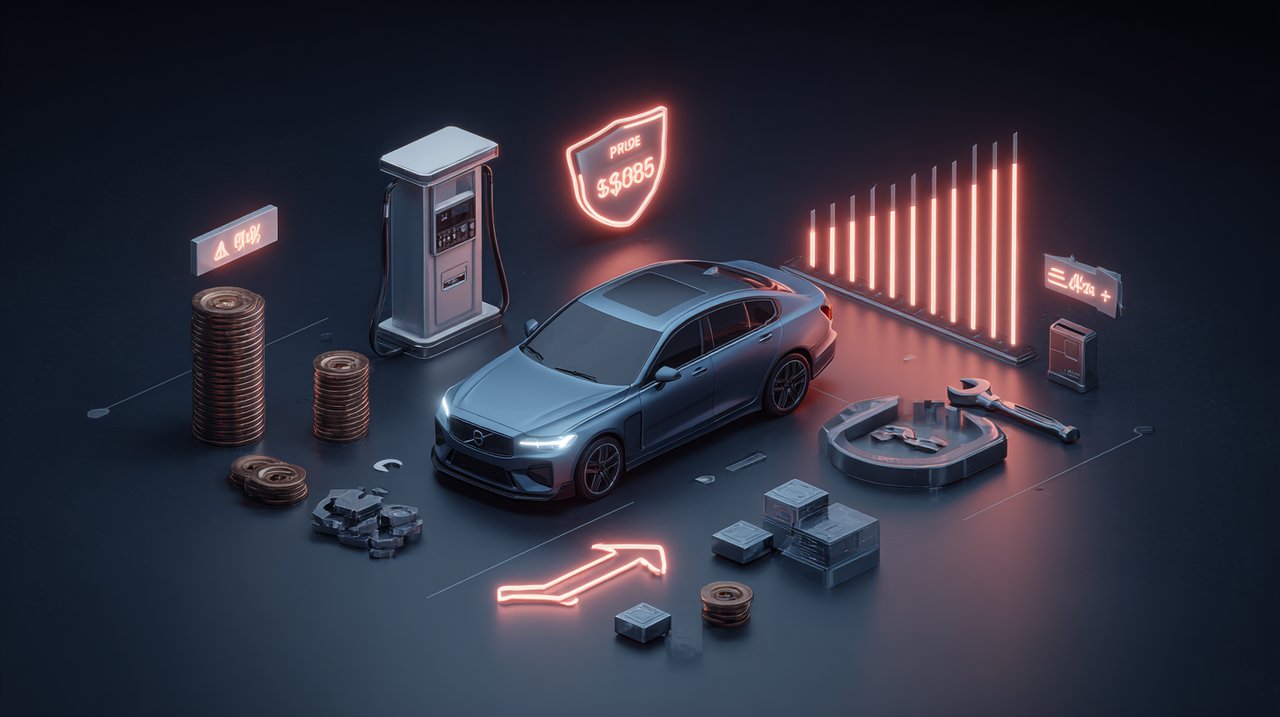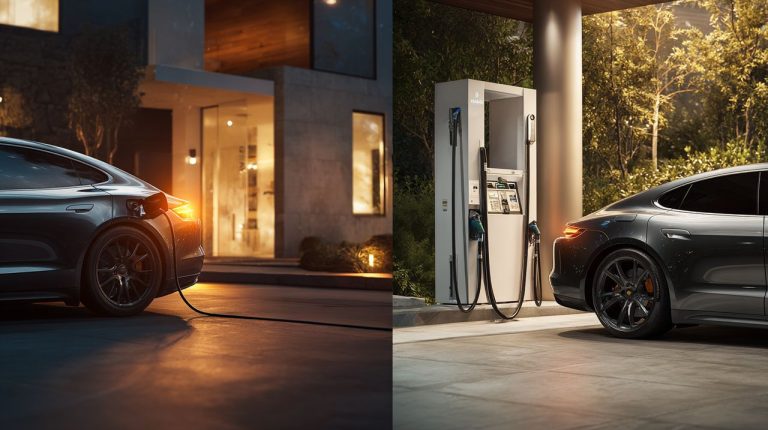Buying a new car? That initial excitement can quickly turn into a headache when you start digging into loan rates, insurance, and depreciation. It often feels like you’re drowning in disconnected numbers, leading to paralysis and unexpected costs.
But what if we told you there’s a way to turn this chaos into a clear, actionable financial blueprint? In this guide, our team will walk you through a practical, step-by-step framework to truly compare car costs before buying. We’ll move you past just the sticker price, helping you integrate all the critical financial pieces into one clear picture. The goal? To make your next car purchase a genuinely smart financial move.
The Integrated Financial Blueprint: Moving Beyond Isolated Metrics
Ever feel like comparing car finances is like trying to solve a puzzle with pieces scattered across different rooms? You’ve got one browser tab open for loan rates, another for insurance quotes, and yet another for depreciation estimates. This "digital friction," where vital information lives in separate silos, makes it nearly impossible to see the holistic financial picture.
Here at The Idea Sager Lab, we believe in workflow integration. That’s why our approach encourages you to build a single, comprehensive financial ecosystem for your car comparison. Instead of just reacting to individual numbers, you’ll proactively design a system where all your financial data points flow into one central view.
As we often say, true financial clarity isn’t about collecting more data; it’s about better integration of the data you already have.
This central hub could be a simple spreadsheet, a dedicated app, or even a structured notebook. The whole point is to eliminate the mental gymnastics of switching contexts. You’ll instantly see how each financial component interacts with the others. This systematic approach allows you to pinpoint hidden costs, optimize your trade-offs, and ultimately make a decision that feels both intuitive and financially sound. Think of it as choreographing your financial data, not just collecting it.

Unmasking True Costs: The Total Cost of Ownership (TCO) Deep Dive
Most of us naturally zero in on the purchase price when buying a car. But that’s just the tip of the iceberg! There are so many other expenses that pile up over a vehicle’s lifespan. That’s where Total Cost of Ownership (TCO) comes in. TCO is the ultimate measure of what a car really costs you, from the moment you buy it to when you eventually sell it.
It covers everything: the upfront price, yes, but also depreciation, fuel, insurance, maintenance, and financing costs. Understanding TCO is absolutely crucial because, in our experience, the cheapest car to buy is almost never the cheapest car to own. A lower-priced vehicle might hit you with higher insurance premiums, rapid depreciation, or expensive maintenance, quickly wiping out any initial savings.

For example, a luxury car might have a higher sticker price, but if it depreciates slower than a mainstream model, its TCO could actually balance out over time. To effectively compare two cars financially, we highly recommend using online TCO calculators like ours True Cost of Car Ownership Calculator, or those from Edmunds or Kelley Blue Book. Simply plug in the details for both vehicles you’re considering and project the costs over a typical five-year ownership period. This gives you a clear, side-by-side comparison that lays bare the long-term financial impact of each choice.
Depreciation: Predicting Your Car’s Future Value
Here’s a big one that most people miss: depreciation. This is the loss in a car’s value over time, and it’s often the single largest cost of car ownership. Your car starts losing value the second you drive it off the lot, and this rate can vary wildly between models and brands. Some vehicles hold their value incredibly well, while others seem to plummet, turning your shiny new asset into a rapidly diminishing liability.
Understanding depreciation is absolutely vital for a smart financial car comparison. Why? Because it directly impacts how much money you lose when you eventually sell or trade in that vehicle. Let’s look at a quick example:
- If Car A costs $30,000 and depreciates by 50% in five years, your loss is $15,000.
- If Car B costs $32,000 but only depreciates by 40% in the same period, your loss is $12,800.
See? Even with a higher initial price, Car B becomes the financially superior choice in the long run. Our actionable advice here is to research projected resale values from reputable sources like Kelley Blue Book or J.D. Power. Compare the estimated five-year depreciation percentage for the vehicles you’re targeting. This foresight helps you pick a car that acts more like a long-term investment rather than a financial black hole.
Insurance Premiums: An Unseen Monthly Burden
Insurance often feels like a secondary thought, but believe us, car insurance premiums can seriously impact your monthly budget and your overall car buying financial guide. It’s not just about your driving history or where you live; the cost of insuring a vehicle is heavily influenced by its make, model, safety ratings, repair costs, and even how likely it is to be stolen.
A seemingly small difference in vehicle type can lead to hundreds, or even thousands, of dollars in annual premium variations. It’s a common mistake to assume insurance costs will be similar across vehicles in the same class. For instance, a sports car will almost always cost more to insure than a family sedan due to higher repair costs and perceived risk. Even subtle differences like trim levels or engine size can bump up those premiums.
So, our advice is clear: before you commit to a purchase, get actual insurance quotes for both vehicles you’re comparing. Provide your insurance agent (or use reputable online comparison tools) with the exact VINs or detailed specifications for each car. This proactive step can uncover a significant financial burden you might otherwise miss, allowing you to factor this critical expense into your comprehensive financial car comparison.
Fuel & Running Costs: Beyond the MPG Sticker
Everyone looks at fuel efficiency (or charging costs for EVs), and rightly so. But the true running costs extend far beyond that advertised miles per gallon (MPG) number. Your driving habits, the type of fuel required (regular vs. premium), and even tire wear can drastically change the actual cost of keeping your car on the road.
A common pitfall we see: a car with slightly better MPG might demand premium fuel, completely negating any perceived efficiency advantage. Think about your typical annual mileage. If you drive 15,000 miles a year, the difference between a car getting 25 MPG and one getting 30 MPG can easily add up to hundreds of dollars annually.
For electric vehicles, don’t forget to factor in the cost of electricity (both at home and public chargers) and the potential cost of installing a home charging station. And here’s another often-forgotten expense: tires! Larger, specialized tires can be significantly more expensive to replace than standard ones.
To truly compare car costs before buying, we recommend calculating estimated annual fuel/charging costs for both vehicles based on your projected mileage and local fuel prices. Also, research the average tire replacement costs for each model. This detailed approach provides a much more accurate picture of your ongoing expenses, moving you beyond just that initial fuel efficiency number.
Maintenance & Reliability: Factoring in Future Repairs
Beyond just routine oil changes, the long-term reliability and expected maintenance costs of a vehicle are absolutely critical in any financial car comparison. We’ve seen it time and again: some car brands and models are legendary for their reliability and lower repair costs, while others are notorious for frequent, expensive breakdowns. Ignoring these potential future expenses is a recipe for serious financial strain down the road.
Think about the age and mileage of the cars you’re eyeing. A used car might have a lower purchase price, but it could also come with higher maintenance costs as components age. On the flip side, a new car comes with a warranty, but its scheduled maintenance at a dealership might be surprisingly expensive.
Our recommendation: research average repair costs for specific models and check reliability ratings from organizations like Consumer Reports or J.D. Power. This provides invaluable insight. We also advise factoring in an annual budget for maintenance and unexpected repairs, especially for older vehicles. Comparing the common issues reported for each model can help you anticipate potential expenses. For example, some used European luxury cars might seem like a steal upfront, but their parts and labor costs can be eye-wateringly expensive compared to, say, a reliable Japanese sedan.
Financing & Loan Structures: The Cost of Capital
For most of us, financing is a huge part of buying a car. And let me tell you, the terms of your loan can dramatically change the total cost of that vehicle. A common trap is focusing solely on the monthly payment. Here’s a pro tip from our team: the Annual Percentage Rate (APR) and the loan term are far more critical in determining how much you’ll actually pay.
A lower monthly payment achieved by stretching out the loan term often means you’ll pay significantly more in total interest over the life of the loan. Even a seemingly small difference in APR can translate into thousands of dollars. For example, on a $25,000 loan over five years, a 5% APR costs about $3,300 in interest. But jump to a 7% APR, and you’re looking at around $4,600. That’s a $1,300 difference for just two percentage points!

Your Integrated Automotive Financial Strategy
So, as we’ve seen, comparing two cars financially before you buy isn’t just about tallying up numbers. It’s about building a robust financial ecosystem for your automotive decision. By systematically integrating factors like Total Cost of Ownership, depreciation, insurance, running costs, maintenance, and financing, you literally transform those scattered data points into a cohesive, actionable blueprint.
This methodical approach, much like choreographing a complex workflow, empowers you to see the true financial landscape of each vehicle. You’re no longer just buying a car; you’re making a well-understood financial commitment. So, start by centralizing your research, leverage the tools and insights we’ve shared here, and confidently drive towards a financially intelligent purchase.
Ready to build your car’s financial blueprint? Your first step is simple: gather TCO data for your top two contenders. Let’s get to it!
💡 Frequently Asked Questions
The guide aims to provide a practical, step-by-step framework to compare car costs before buying, moving beyond just the sticker price. It helps integrate all critical financial pieces into one clear picture to make the next car purchase a smart financial move.
The "Integrated Financial Blueprint" approach encourages building a single, comprehensive financial ecosystem—like a spreadsheet or dedicated app—where all financial data points (such as loan rates, insurance quotes, and depreciation estimates) flow into one central view. This eliminates "digital friction" and helps buyers see how each financial component interacts.
TCO is the ultimate measure of what a car really costs you from purchase to sale. It covers the upfront price, depreciation, fuel, insurance, maintenance, and financing costs. Understanding TCO is crucial because the cheapest car to buy is almost never the cheapest car to own, and it reveals the long-term financial impact of a vehicle.
Beyond the sticker price, car buyers should consider depreciation (often the largest cost of ownership), insurance premiums (which can vary significantly by model), fuel and running costs (including fuel type and tire replacement), long-term maintenance and reliability expenses, and the terms of financing (especially the Annual Percentage Rate and loan term).








